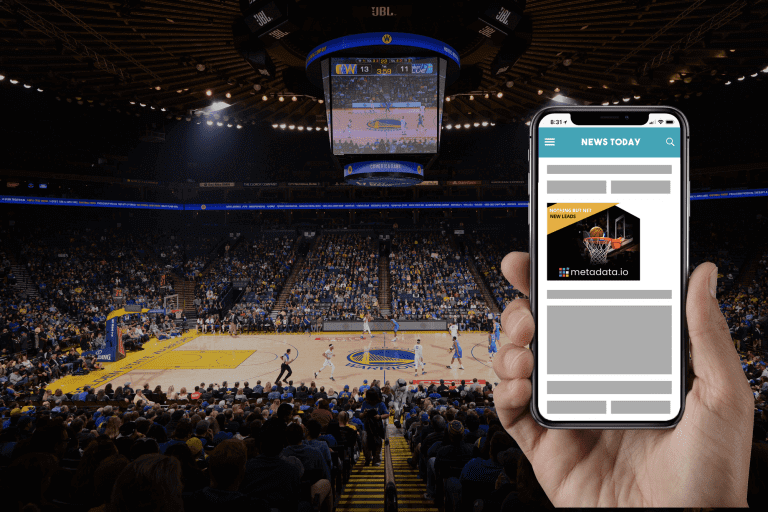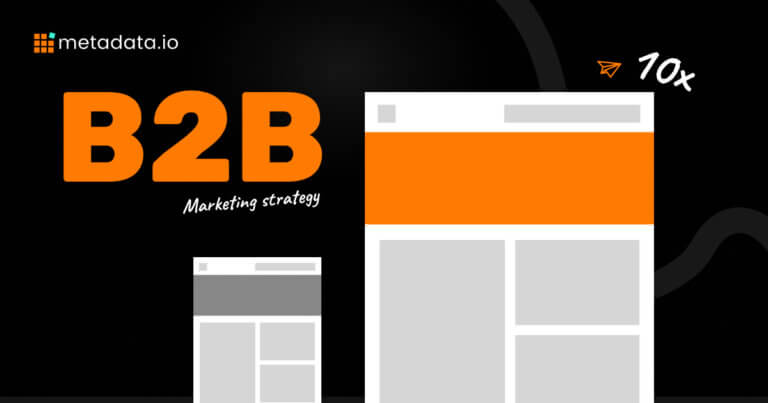How to Effectively Scale Paid Media Campaigns Without Overspending
Scaling paid media campaigns can feel like walking a tightrope. Move too fast, and your budget disappears without delivering real results. Move too slow, and you miss out on growth opportunities. So how do you scale in a way that drives real revenue, and without wasting money? And is it even possible?
The good news is, it’s absolutely possible. With the right approach, you can expand your reach and increase conversions without letting costs spiral out of control. In this guide, we’ll break down practical strategies to help you scale smarter.
How to Scale Paid Media Campaigns
Scaling paid media campaigns requires a methodical approach that emphasizes optimization before expansion. Focus on what works, then steadily branch out to new channels and creative strategies.
1. Start with a Comprehensive Audit
Begin by thoroughly auditing your current campaigns and KPIs. Analyze metrics like click-through rates, conversion rates, return on ad spend, and customer acquisition costs to identify strengths and weaknesses.
Collect data from recent months across your main channels, including email stats, social media interactions, and on-site engagement. Use tracking tools and surveys as they can uncover trends, showing where your traffic comes from and how it behaves.
After gathering information, identify top-performing elements aligned with your objectives and determine what needs to be adjusted or eliminated. Setting SMART (specific, measurable, achievable, relevant, time-bound) goals clarifies how each campaign step meets broader business aims.
2. Optimize Before You Scale
Scaling too soon can make small problems bigger instead of improving results. Before increasing your budget, fine-tune every part of your campaign to avoid wasting ad spend.
Ad creatives are a good place to start. Experiment with different formats like video, native ads, and responsive search ads to see what gets the most engagement. A/B test headlines, images, and CTAs to find the best-performing combinations. If engagement starts to drop, refresh creatives to keep your ads from going stale.
First-party data is a powerful tool for targeting the right audience. Instead of casting a wide net, focus on retargeting people who have already interacted with your brand—website visitors, content downloaders, or past leads. Dynamic ads that adapt to user behavior can make retargeting more effective.
A landing page should match the promise of the ad and make it easy for visitors to take action. A slow page, cluttered layout, or unclear CTA can drive people away. Use heatmaps and session recordings to see where visitors drop off and make adjustments based on real behavior.
A/B testing takes the guesswork out of scaling. Instead of increasing spend on an unproven campaign, test key variables like ad copy, audience targeting, and bid strategies. Once you have a version that consistently performs well, then it makes sense to scale.
3. Diversify Your Channels
Relying too much on one platform can backfire if algorithms change or costs rise. Expanding to multiple channels helps you reach different audiences and reduces risk.
LinkedIn works well for B2B campaigns, letting you target by job title, industry, and company size. Facebook and Instagram have broader reach and can help with brand awareness and retargeting, but targeting professionals on these platforms can be tricky. Metadata improves B2B targeting on Facebook by using AI-driven audience segmentation, so your ads reach decision-makers who are more likely to convert.
X (formerly Twitter) and newer platforms may offer untapped opportunities, especially if your audience is active there.
4. Scale Smart: Vertical vs. Horizontal Scaling
When scaling paid media campaigns, you can choose between vertical and horizontal strategies.
Vertical scaling involves gradually investing more in top-performing campaigns. Confirm they deliver excellent ROAS, then increase investment incrementally. Monitor conversion metrics to ensure performance remains strong and use analytics tools to stay agile with changes in audience behavior.
Horizontal scaling expands your audience by targeting new segments or verticals without simply increasing existing budgets. You can branch into different industries, job titles, or regions to widen your reach.
5. Use Data-Driven Decision Making
Instead of relying on assumptions, use performance metrics to adjust your budget, refine targeting, and improve ad messaging.
Start with the basics: track conversion rates, cost per lead, and return on ad spend to see what’s working. Look for patterns in audience behavior—such as which ads drive engagement and where users drop off in the funnel. This helps you focus your budget on the most effective channels.
AI tools can speed up decision-making by analyzing large datasets and adjusting bids automatically. For example, platforms like Metadata use machine learning to optimize ad spend and improve targeting.
Predictive analytics can also help forecast demand and time promotions. If past data shows certain industries convert more at specific times of the year, adjust your campaigns accordingly.
The more you rely on real data instead of guesswork, the more efficient and scalable your paid media strategy becomes.
6. Monitor and Adjust in Real-Time
Paid media campaigns can change fast, and waiting too long to adjust can waste budget. Use analytics tools like Google Analytics or Adobe Analytics to track key metrics such as bounce rates, cost per conversion, and engagement levels. If a campaign suddenly underperforms, act quickly and pause low-performing ads, tweak your targeting, or adjust your budget allocation.
Set up automated alerts for key performance drops so your team can react immediately instead of spotting issues too late. If engagement declines, test new headlines, visuals, or offers to see what resonates better.
Ad fatigue is another factor to watch. If the same people see your ad too many times, performance drops. Rotate visuals, refresh messaging, and use A/B testing to keep results from stagnating. Small adjustments in real time can make the difference between a wasted budget and a high-performing campaign.
7. Build a Scalable Infrastructure
As paid media campaigns grow, manual processes slow things down. Automating repetitive tasks like lead qualification and budget allocation frees your team to focus on strategy instead of micromanaging campaigns. AI-powered tools, such as automated bidding and audience targeting, help manage scaling without increasing workload.
Cloud-based platforms make it easier to expand without hitting performance limits. Tools that integrate campaign management, audience segmentation, and reporting allow you to scale efficiently without juggling multiple disconnected systems.
A strong reporting setup is also necessary. Real-time dashboards help track ad performance across channels so you can adjust quickly. Instead of waiting for end-of-month reports, use live data to shift budgets, refine targeting, and cut underperforming ads before they drain resources.
As campaigns and technology evolve, invest in upskilling your team so they can interpret data accurately and adjust strategies based on performance trends.
8. Spend Where It Matters Most
Spending more doesn’t always mean better results. Instead of spreading your budget too thin, invest more in the ads, audiences, and platforms that drive the best returns.
AI-driven budgeting tools can help by shifting spend to high-performing campaigns and cutting back on underperforming ones automatically. Setting up automated budget rules based on performance thresholds prevents wasted spend and keeps campaigns efficient.
Track key financial metrics like ROAS and CAC to identify where your budget is working hardest. Regularly reviewing these numbers can uncover hidden costs and show where funds should be reallocated.
Instead of trying to optimize everything at once, double down on what’s already working. Prioritize high-performing creatives and audience segments, and keep testing to refine your approach.
9. Experiment and Test New Strategies
Sticking to the same ad formats and platforms limits growth. Regularly testing new strategies helps uncover what resonates most with your audience.
Try different ad placements and formats—native ads, video, or interactive content—to see what drives the best engagement. Expanding beyond Google, Facebook, and LinkedIn to programmatic ad networks or industry-specific sites can help reach overlooked audiences.
Emerging strategies like micro-influencer partnerships or industry expert collaborations can add credibility and expand your reach without requiring a massive budget. These endorsements often perform well in niche B2B markets where trust matters.
10. Align Marketing with Sales
Scaling paid media works best when marketing and sales teams work together. If leads don’t match sales goals, conversions stall, and budget is wasted.
Set shared KPIs so both teams track the same success metrics. Instead of just counting leads, focus on lead quality—marketing should know which prospects convert, and sales should understand how leads were nurtured.
Regular check-ins help catch issues early. If sales sees a pattern of stalled leads, marketing can adjust messaging or refine targeting. Use CRM tools to track interactions and make sure both teams have the support they need as workloads increase.
A constant feedback loop makes both teams more effective. Sales can share insights from real conversations to help marketing fine-tune campaigns, while marketing data can help sales tailor their approach.
Scale Your Paid Media Campaigns with Metadata
Scaling paid media isn’t just about spending more, but it’s about making every dollar count. The best-performing campaigns are built on real-time data, precise targeting, and continuous testing, not guesswork.
AI-driven platforms like Metadata take the manual effort out of campaign scaling. With automated audience targeting, budget allocation, and A/B testing, Metadata helps businesses find and convert the right buyers faster. Book a demo to learn more about how you can use our platform to scale your B2B campaigns.


